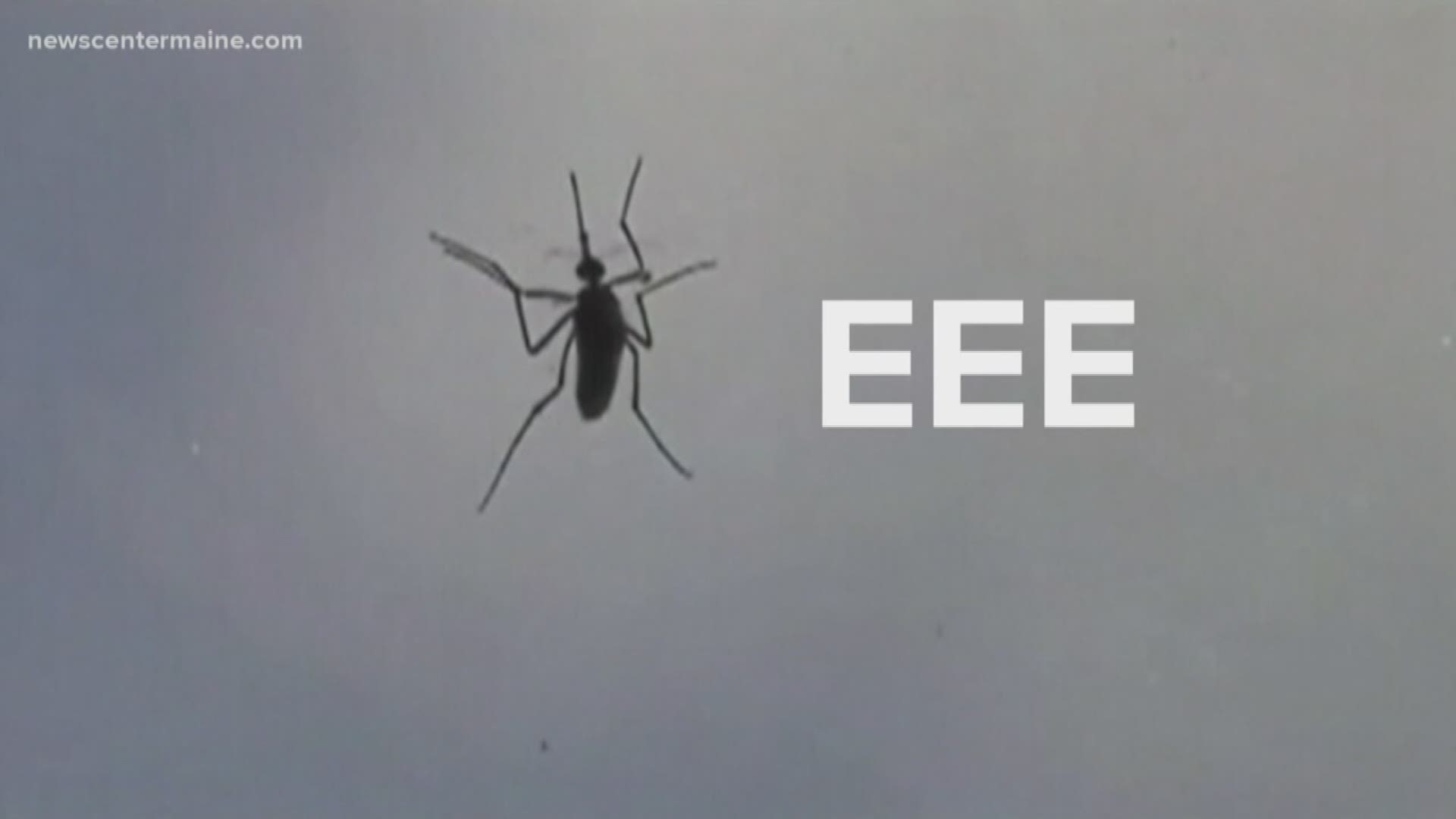ALFRED, Maine — 2019 has been one of the worst years in recent memory for cases of Eastern Equine Encephalitis, also known as EEE.
It's a rare, mosquito-borne virus that can be deadly.
Nationwide, an average of seven people come down with the virus each year. This year, that number is 27.
In Maine, there have been no human cases, but in nearby Massachusetts there have been 12, including three deaths.
The highest risk area is York County. That's where, on Aug. 28, a horse contracted the virus.
On Sept. 6, mosquitoes in a pool in Lebanon also tested positive for EEE.
While there have been no human cases so far in Maine, York County Director of Emergency Management Art Cleaves says it's crucial folks take precaution.
"The fact they found EEE in a horse in York County means it's in the area and it's important people in York County know that and are informed about preventative measures because if you contract it, it could be deadly," Cleaves said.
Maine CDC advises minimal outdoor activity from dusk to dawn, when mosquitoes are most active. If outdoor activity is unavoidable, take precautions to prevent mosquito bites, including:
- Wear protective clothing: long-sleeved shirts, long pants, and long socks
- Use an EPA-approved repellent
- For use on skin: DEET, Picaridin, IR3535, Oil of Lemon Eucalyptus
- For use on gear and clothing: Permethrin
- Take steps to control mosquitoes around your property by emptying artificial sources of standing water, fixing holes in screens, and working with a pesticide control applicator.
RELATED: EEE virus: How cold it needs to get to kill threat
RELATED: How to protect yourself from EEE virus
Some climate experts say our hotter summers, milder winters, and more frequent and heavier rains have led to larger populations of mosquitoes.
Director of the UMaine Climate Change Institute Paul Mayewski says, "Diseases that are prominent the south that require warmer conditions are going to appear in Maine."
EEE outbreaks usually come in waves. Lulls can span a few years.
"There were cases in 2014 and 2015 in York County," Cleaves said. "I can happen here. It has happened here. So it's important to take preventative measure now."
A frost is not enough to diminish the threat. It takes a hard freeze, which is a few hours below 32 degrees, to eliminate the threat.

